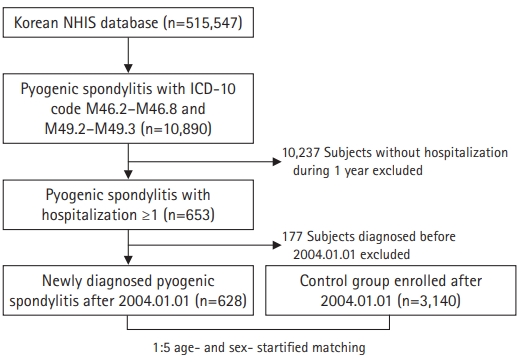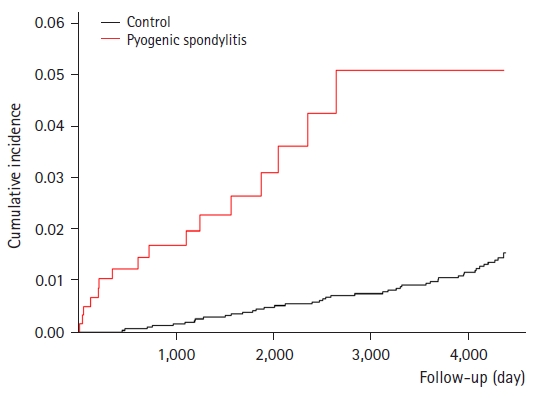 |
 |
| J Korean Soc Geriatr Neurosurg > Volume 18(1); 2022 > Article |
|
Abstract
Objective
Methods
Results
Acknowledgments
Fig. 1.

Fig. 2.

Table 1.
| Characteristic | PS (n=628) | Control (n=3,140) | P-value |
|---|---|---|---|
| Male | 323 (51.4) | 1,615 (51.4) | 1 |
| Age (yr) | 59.09±9.35 | 59.09±9.35 | 1 |
| Age ≥65 yr | 199 (31.7) | 995 (31.7) | 1 |
| Low income | 161 (25.6) | 840 (26.8) | 0.6 |
| Diabetes | 83 (13.2) | 289 (9.2) | <0.01a) |
| Hypertension | 268 (42.7) | 1,241 (39.5) | 0.15 |
| Dyslipidemia | 99 (15.8) | 486 (15.5) | 0.9 |
| Myocardial infarction | 10 (1.6) | 53 (1.7) | 1 |
Table 2.
Table 3.
REFERENCES
-
METRICS

-
- 0 Crossref
- 0 Scopus
- 2,185 View
- 23 Download
- ORCID iDs
-
Chong Jin Park

https://orcid.org/0000-0001-8843-6084Seung Hun Sheen

https://orcid.org/0000-0002-0454-8810Jeong Gyun Kim

https://orcid.org/0000-0001-9252-882XHakyung Kim

https://orcid.org/0000-0003-2450-760XYeo Song Kim

https://orcid.org/0000-0003-2056-3719In-bo Han

https://orcid.org/0000-0002-0834-9325Je Beom Hong

https://orcid.org/0000-0002-4812-565XChun Kee Chung

https://orcid.org/0000-0003-3485-2327Seil Sohn

https://orcid.org/0000-0001-5724-8099 - Related articles



 PDF Links
PDF Links PubReader
PubReader ePub Link
ePub Link Full text via DOI
Full text via DOI Download Citation
Download Citation Print
Print



